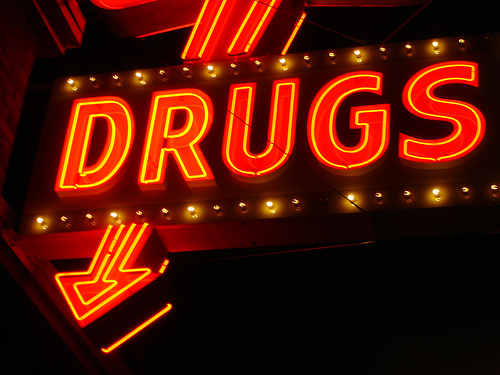Heroin Addiction, Creating Understanding for Treatment and Recovery
Exploring Heroin Addiction: Basic information and history
Heroin addiction is on the rise. Heroin can be found as a white or brown powder, or as a black sticky substance. It is classified as an opiate, which stands for drugs that are naturally or synthetically derived from the flowers of the poppy plant. Heroin is synthetically extracted from Morphine, a naturally occurring substance derived from the seedpod of the Asian opium poppy plant.
The street heroin, also known as “black tar heroin”, appears black because of the impurities added to it during its production, known as “cuts”. These are mostly sugar, powdered milk and even poisons such as strychnine. Most of these do not fully dissolve and can cause a clogging of the blood vessels that supply blood to the vital body organs when injected.
Heroin was synthesized to assist the addicts recovering from Morphine, it being a “non-addictive” substance. Unfortunately, it proved to be even more addictive than Morphine.
Heroin has various street names which include; H, Horse, Smack, Brown Sugar, Dope, Skunk, Skag, White Horse, China White, Mexican Black Tar, White Horse, Nose Drops, Hell Dust, Thunder and Junk.
What is Heroin addiction? How Heroin is consumed?
Heroin is normally injected, inhaled by sniffing or snorting and smoked. All of these methods ensure that the Heroin is absorbed into the brain at a very high rate. It is this high rate of absorption by the brain that causes Heroin to make changes in the brain that later result in addiction. The Mexican Black Tar kind of Heroin is mostly injected because of its consistency.
How Heroin addiction affects the Brain
In its independent state, Heroin is a harmless drug. But when it reaches the brain, it is converted back to Morphine. It is then bonded to the molecules in the brain known as opioid receptors. These receptors are normally located in the part of the body involved with pain. This, combined with its analgesic nature, result in the user feeling emotional and physical pain and aches reducing. Also because it is sedative in nature, the users have reported experiencing feeling a warmth, relaxing feeling of detachment and less anxiety. These effects appear very quickly and that is why the users describe feeling a “rush” of euphoria suddenly engulfing them, making them feel “high” and relaxed.
After these initial feelings, the users feel drowsy and experience a clouded brain. These feelings can last for a very long time. Also because opioid receptors are located in the brain stem, which controls the critical processes of life like blood pressure and respiration, users experience a slowing down of the basic body functions like breathing and heartbeat.
Heroin Effects and Heroin Addiction
After the user has experienced the initial surge of emotions, there follows a wide range of body reactions. These include; shortness of breath, constricted of pupils, dry mouth, sudden changes in behavior or actions, droopy appearance, hyperthermia, vomiting, nausea and sedation.
Within hours of these effects fading, the user will crave for more Heroin and if they fail to administer it into their system, they will enter a state known as withdrawal. This state is characterized by symptoms such as restlessness, muscle and bone pain, diarrhea and vomiting, cold flashes with goose bumps known as “cold turkey” and kicking movements known also as “kicking the habit”.
Pregnant Heroin users risk spontaneous abortion, low birth weight and eventually the infant may be born with physically dependent on heroine, suffering from neonatal abstinence syndrome (NAS). This is a disease that infants get infected with, making them withdraw from medicine. Though recent studies have shown treating opioid addicted expectant mothers with buprenorphine which is a medication for opiod dependence can reduce NAS symptoms.
As a result of heroin addiction, a state in which the body cannot function without the drug in its system, and tolerance- a state in which the body requires a higher dosage of the drug in order to function, heroin addicts may develop certain behavioral and physical changes. These include; infection of the heat valve and heart lining, disease of the kidneys, abscesses and skin infections, liver disease, a risk of contracting HIV, constant runny nose, lying among others.
Treatment of a heroin addiction
Heroin addiction can be treated through various ways including therapy and medicinal. In medicinal use, the inpatient program is recommended compared to the outpatient program which should be applied after a patient has completed the inpatient program. Example of medicinal is by use of buprenorphine and methadone. These work by binding to the receptors as heroin though weakly, so a user can slowly reduce dependence on the drug. There is also the use of naltrexone. This blocks the opioid receptors so the drug cannot reach, though patients normally have a hard time using this drug. There is also the use of naloxone albeit during emergency treatment of heroin use.
Where therapy is applied, contingency management is often encouraged and patients can earn voucher points for each negative drug test. These points can be later exchanged for goods.
In cognitive-behavior therapy, the patients are taught stress coping skills and learn to modify addiction.
Getting the right Treatment through experts: Dr. Dalal Akroury

Best Addiction Treatment Education – Helping Addicts Recover
Due to the seriousness of heroin addiction cases as a threat to life, it’s of great essence to only choose qualified addiction experts and professionals like Dr, Dalal Akoury of Awaremed Wellness and Resource Center. When all the aspects of addiction is addressed and proper treatment employed, success is eminent. Dr, Dalal’s treatment focuses on the restoration of the body, the mind and the spirit to bring a wholesome transformation of life of the addiction victims.
If you need addiction training that touches on all the genetics and epigenetics of addiction, then Dr. Dalal is the right expert to offer this. Their addiction training also focuses on physicians wanting to become addiction experts.















